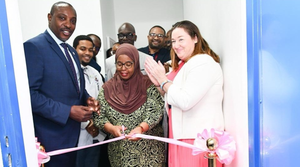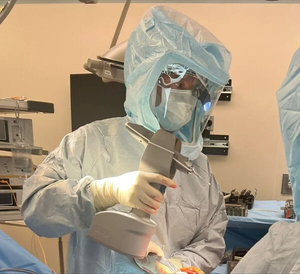March 5, 2004
Originally Published MPMNMarch 2004
EDITOR'S PAGE
Funding the Future of Healthcare
Imagine a toothbrush with a biosensor chip that checks your blood sugar and bacteria levels while you're brushing your teeth. Or eyeglasses with a tiny embedded display that can help you to remember people and things. How about a device that collects images of your skin surface over time and enables the early detection of malignant moles?
No, these are not gadgets from an episode of Star Trek. They are innovative new medical products currently in development. And you could be seeing them on the market sooner than you think.
That is, if Congress approves the FY 2005 budget proposed by President George W. Bush. The President has requested $216.7 million for the medical technology review program at FDA's Center for Devices and Radiological Health (CDRH). This is a record $25.6 million increase over FY 2004.
The funding is much needed. Medical technology is developing so rapidly that CDRH must enhance its reviewer training in order to stay on top of industry trends.
The agency will also have to recruit and contract with experts to develop guidanceand standards for manufacturers. The additional money will be a big help in making sure that happens.
"The Bush administration demonstrated its commitment to ensuring patients have timely access to new lifesaving medical technologies," says AdvaMed president Pamela G. Bailey. "The funding increasewill give FDA the resources it needs to thoroughly and efficiently review tomorrow's breakthroughs, getting them into the hands of the patients and physicians who need them."
Some of these new technologies that will be affected by the improvements at CDRH are featured this month in MPMN's special feature on emerging technologies. One such product is a diagnostic pill that can sample body fluids and other vital data and then transmit the information to a computer.
The device may one day replace invasive procedures for detecting colon cancer.
And it would be "as easy to swallow as a headache tablet," says David Cumming,one of its creators.
For more information on the lab in a pill and other breakthroughs in medical devices, turn to page 40 in this issue.
And in keeping with the spirit of emerging technologies, next month MPMN will devote an entire section to e-health and connectivity issues. Be sure to check out the stories on universal connectivity for bedside monitors and wireless technology for surgical instruments, among others.
All of these innovations are diverse in nature, but they have at least two things in common. The first and most important is that they all have the potential to improve healthcare. The second is that they all haveto go through the approval process at FDA.
In order to do that quickly and efficiently, FDA must have staff trained to keep upwith the pace of industry. And that can only happen if Congress approves the President's budget.
Susan Wallace, Managing Editor
Copyright ©2004 Medical Product Manufacturing News
You May Also Like


